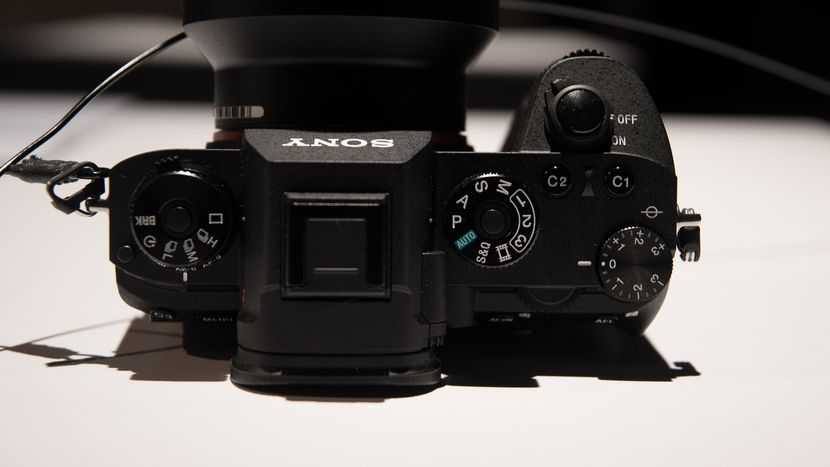Huawai P20 pro…. the start of the review
Photographers and cameras….. aren’t they always connected?
But what if you don’t need to bring a camera to every location and the images are good enough for you?
Is the new Huawai P20 Pro the solution?
Let me start by stating the following.
I ordered my P20 pro via the normal retail channel in the Netherlands and are going to pay full price.
I’m not working with Huawai (at the moment) although I’m always open for this when the camera really performs the way I hope. So this whole review series that is coming is my PERSONAL opinion and views, I’ll bring you the negatives and the positives, no coloring by sponsoring or whatever.
Not so long ago I couldn’t even think about switching from Apple to any other brand.
Fast forward 2 years and I’m actually not owning any Apple product, my Apple watch is now a Garmin, my Desktop and laptops are PCs, our home is now updated to Google wifi and we talk, play games and use our Google Homes and Chromecasts for audio, alarms etc. man….. that went fast. And in all honesty I’m not looking back, although I still follow all the Apple news of course (still have a sweetspot for the brand).
Without a doubt the hardest thing to change was my Phone.
You really don’t want to know how much I use my Phone, I don’t even worry about battery life…. because…. well it will never last me a day to start with, yes I’m using my phone more than my desktop, laptop and tablet combined.
When Apple released the iPhone X and 8 I was not impressed (except for the price) and decided it was time to go, also due to a rising amount of problems we encountered and things we saw on the Android side that was very attractive in the way the phones worked nicely together with Macs and PCs (this was pre iOS11 btw, just to be fair). And let’s start off by saying I’m not and I repeat NOT an Android or iOS fanboy, I’ve always told people that as soon as something better was available I would switch from Apple, I just added that I didn’t see that coming… well I indeed didn’t see that one coming 😀
Anyway long story short.
I ordered a Samsung Note 8 a few months ago to replace my iPhone and although getting used to Android is a huge Better/Worse game and also a lot to get used to I have to say that the transition actually went very smooth and I didn’t regret is one bit. The Note 8 was/is a great phone, although I had a really hard time finding a screen protector that didn’t prevent me from typing without (too many errors) and eventually just gave up and used it unprotected (oh that sounds really bad, but you know what I mean).
Now how do I use my phone…..?

First off there is my mail and social media.
I always try to answer people personally and within 24 hours. This often means that I’m checking mail and social media every hour, also our Patreon site and YouTube get a lot of attention. Because of the possibility to do this all on a phone I have to say that I’m now preferring most email traffic and social media via my phone, it’s just faster and easier and I can do it everywhere…… yeah everywhere 😀
Now in all honesty I can do that stuff on any phone that has a reasonable screen.
I don’t play games and don’t edit videos on the road… well it’s cool that it’s possible and it’s awesome how it works but in all honesty I’m much faster on my laptop and games… I only play when flying and at that time like my tablet more, it’s actually almost sad to say but I just don’t have time to play games.
So why do I always upgrade my phone and what makes this phone so fricking awesome?
The camera….
Let’s be straight to the point, I LOVE photography.
I always shoot, it doesn’t matter where I go I’m always taking snaps and I love to share these with my friends and family and you guys. So the reason I always am on the lookout for a better camera/experience is I think pretty clear.
The Huawai P20 pro caught my attention as soon as the specs were released.
40MP… well cool but not that impressed… let’s be honest guys don’t expect a smartphone with 40mps to come even close to a modestly good dedicated 24MP+ camera in most cases. However there are a few things that really caught my attention on the p20 pro that in my opinion could be a game changer, and seeing the first results that’s actually true.
40MP
Well let’s get this one out of the way first.
Yeah… that’s a lot of pixels.
Your first opinion will probably be… “that’s bad” and that’s what most people will think, for the very simple reason that the more pixels there are on a sensor the more sacrifices you make in dynamic range and low noise performance on higher ISOs, however that’s when the sensor is equal in size. The good thing is that the P20 Pro uses a huge sensor (for smartphones) so that means that it’s not really as bad as it sounds, in fact the sensor is so much bigger than for example the iPhone X that one could say that on the same pixelcount you could say it would be 18-20MP sensor compared to the 12MP of the iPhones. Now that number of 40 doesn’t sound that ridiculous anymore. It’s still a lot more however.
Now to benefit from this 40MP I strongly believe you need good lighting.
So walking around during daytime in the city, or doing landscapes will be absolutely awesome with this kind of resolution (hey I love zooming in), there will be considerable loss in detail compared to a 42MP sony of course, but for a smartphone this will be a huge step up from 8-12MPs.
So what when the light dims?
Well this is actually what triggered me to just order a P20 Pro without waiting for the real reviews.
The P20 Pro also has an option where you are shooting on 10MP instead of 40, meaning this HUGE sensor is now combining pixels in a 4:1 ratio, which means I expect stellar Dynamic Range but most of all very clean High-ISO shots. Because now we are talking about a much larger sensor than the iPhones and Note/Galaxy series and “only” 10MP, meaning you will have one powerful camera for low night.
Add to this the 20MP BW sensor that actually takes care of capturing light and you have a camera that in essence could be miles ahead of the competition.
Now I mostly use my camera in difficult situations, BTS images during workshops, travel photography etc. and in 90% of the cases the light leaves much to be desired, in fact although it’s for social media often I end up with bad images from my Note 8 and previous iPhone which I just can’t post because it was just a tad too dark. In those instances I really don’t care about 10MP, heck even 5-6 would be enough, but by using that huge sensor and pixel combining I would probably be able to shoot much better BTS images with loads of dynamic range to show you guys what’s going on.
Add to this the 3x optical zoom and 5x Hybrid zoom and we also have some creative options.
Of course I still have to see how the “bokeh” effect is in real life (love to use that sometimes) and how the zooms really work, with the Note8 it was a HUGE disappointment because the tele lens didn’t work in RAW, only JPG (ridiculous) I really hope the P20 Pro doesn’t make the same mistake.
Another thing that has a great appeal to me is the start up time.
With the iPhone it was quick, but on the Note8 it’s ridiculously fast, just double tap the power button and you’re ready for the shot, and I even programmed the Bixby button for Lr mobile, so I can choose. The Lr mobile experience is however much slower because it refuses to start with the camera, you still have to click the blue camera. The P20 pro however promises to be ready in 0.3 seconds and already took the shot…. mmmmm let’s see how that works out and if you for example can fix the settings for RAW.
Another option I’m really curious about is actually the 6 second exposure.
I love tech and new techniques and this one promises to be special.
Just go into night mode and shoot for 6 seconds (no tripod needed) and you get a very low noise, razor sharp night shot. It sounds to good to be true, but the results I’ve seen online are incredibly impressive, now of course this is probably “perfect situations” but I still can’t wait to see how this works in real life and how it copes with moving objects.
So what do I expect?
I for one am not the kind of person that thinks that now I can leave my Sony A7RIII at home… and everyone that tells you that a phone will better or rival a good dedicated camera… well don’t buy something from them. So why did I jump on it straight away?
It’s actually very easy to explain.
First of all of course the social media aspect, but that doesn’t really give me enough reasons to invest in a new phone (these are not cheap), the main reason for me is more simple.
As explained at the start I love taking photos, and in some situations it’s just absolutely impossible or not handy to bring my A7RIII or even a smaller one. I love to bike and although I could bring a backpack it’s not really handy, stop at a nice location, get off the bike, park the bike somewhere (no stand on a MTB), get camera out of bag (often not the best locations, or raining), get camera out of bag, take shot, put camera back in bag, zip it up, add raincover and continue bike ride…. it’s doable and often I do it because otherwise I miss some cool shots. But often I also leave the camera at home.
Last year for example we visited Copenhagen and did everything by bike, the RV was parked app 15km from the city center, and bringing a backpack with camera…. well it wasn’t something we wanted to do so I ended up shooting a lot of images with my Note8, the daylight shots came out awesome but the lack of zoom really messed up a lot of cool options we had in several locations, also not being able to zoom in to infinity (joke) was a bit of a disappointment afterwards. In other words I got the proof and some really cool shots, but I also felt I missed a lot.
I hope that the P20 pro can give me the quality I find acceptable for travel and street when I’m not able to bring my A7RIII.
This means I can shoot 40MP when needed during day time and shoot some cool city scapes or landscapes, but can also bring down the pixelcount for shots that are in less than perfect light, and even shoot some really cool night shots with the “tripod” mode. And don’t forget the zoom options. It really seems that Huawai has a potential awesome photographers phone.
In all honesty if I would make a scale of 1/100 where everything above 70 is good enough for me to leave my camera at home for the ease of a smartphone or smaller camera I actually put the note 8 and iPhones at app 40 and I hope the P20 Pro will get me into the positive area of 60. In other words I hope the difference between deciding to leave my A7RIII home and the regret afterwards (which I always have) will be less severe 😀
Thanks for reading so far.
It’s always a bit weird to do a piece like this without actually owning the phone (we expect it to arrive on the 12th, so expect a full review series by then).
Let’s end the start of the review with some things that I already would label…negatives.
1. Battery cases
I love love love battery cases, and although the P20 Pro promises to be a day long performer with a stunning 4000mAh I’m 100% sure it will probably last me till 13:00-14:00 or when I’m lucky 15:00, again I really use my phone a lot. Now with iPhones and even the Galaxy series you have a broad range of cases and battery cases, for the P20 pro I couldn’t find one yet that I like, so I’m still on the look out.
2. Memory
Although the P20 Pro is delivered in a 128GB memory capacity I would have loved the option for an extra MicroSD card, I think this is actually a mistake to not include this.
3. Resolution
Don’t really see it as a huge deal myself, to be honest when I set my resolution to one step lower on my note 8 and forget about it I don’t even notice it, but still I would have loved to have the option for a 4K display, on the other hand…. at least it’s an oled screen (love these).
Ending this part I which isn’t really a part I but more of an intro
Can’t wait to get the P20 pro and start testing, it’s one of the first smartphones in a LONG time that I really look forward to in the form of being potentially miles ahead. For years every generation has become better with better video, slightly better specs, slightly better noise or color, but nothing that makes you go “WOW, THAT’S COOL”….. so let’s see how long this feeling stays after I start testing this baby.
Want me to test something?
Let me know in the comments below.
Do you have an opinion?
Let me know in the comments below.





You must be logged in to post a comment.